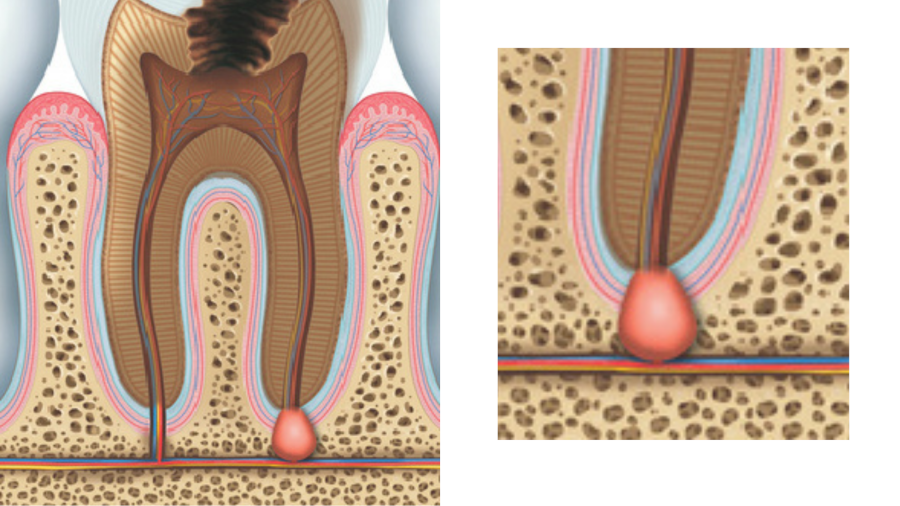What is an abscess?
An abscess is a bacterial infection and consists of a pus pocket. Abscesses can be called periapical—when close to the root of the tooth or in its extremity, or periodontal—when close to the gum.
Why do abscesses occur in teeth?

The abscess on a tooth may be caused by a dental treatment carried out some time ago. For example, if there is a wound close to the area or if a cavity is not treated in a timely manner.
Bacteria will get inside of the dental pulp of the tooth. This pulp consists of connective tissue, blood vessels, and nerve structures. Bacteria may breach the tooth through a crack or chip, and then reach the root of the tooth.
What are the symptoms of a bacterial infection?
Inflammation in the extremity of the tooth root, inflammation in an area of the mouth, or feelings of moderate or intense pain.
Main symptoms of an oral abscess
- Fever.
- A toothache that may be less or more intense. It is generally throbbing.
- While chewing, the person will feel an uncomfortable pressure caused by the food in the affected area.
- A high sensitivity to heat and coldness.
- The face will swell and it may also reach the cheekbone.
- In addition, in the inferior area of the maxilla and neck, there are lymph nodes that may swell.
- If an abscess bursts naturally, the person may smell an unpleasant odour and, at the same time, experience a relief from the pain.
How is an abscess diagnosed?
First, the dentist will examine the affected area. Usually, an auxiliary diagnosis method known as an x-ray will be used. This x-ray provides the exact location of the infection and shows how much it has spread in the nearby areas.
How are oral abscesses treated?
There are various treatments used by dentists. The treatment depends on the cause of the abscess or infection.
- It can be drained through a small incision that will make the pus come out. Afterwards, the area is cleaned with salty water.
- The dentist may prescribe antibiotics, mainly to treat an infection that can affect the adjacent teeth. If the infection is limited to the abscess area, it may not be necessary to take antibiotics.
- Root canal treatment can be used or the tooth can have another dental treatment. The dentist will make a small hole, remove the nerve or pulp, fill in the radicular canals with the appropriate products and seal the pulp chamber and its canals.
- In some cases, if it is not possible to eliminate the abscess, the tooth may need to be removed. By extracting the tooth, the infection will be eliminated. Nowadays, dentists only chose to extract a tooth when there are no other viable options to treat the condition.
Oral Abscess Prevention
To prevent abscesses, the first step is correct and consistent oral hygiene. Teeth should be brushed several times a day. Dental appointments are fundamental to identity tooth decay. If they are treated in their initial stage, the tooth may last for many years and abscesses will be prevented.
VitaCentre Medical Reference- Reviewed by VitaCentre Dental Clinic Staff on July 27, 2022

